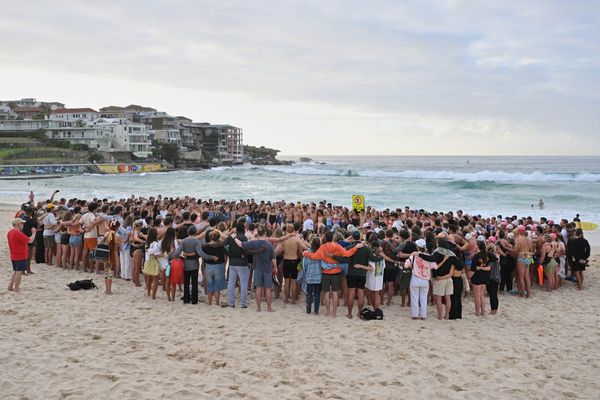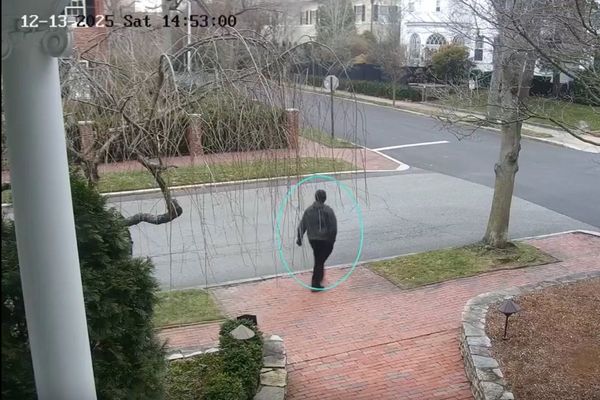
The second tier of world surfing is a theatre of heartbreak, financial strain, cut-throat competition and – more often than the surfers would hope – subpar waves. But the lure of 17 golden tickets to the “dream tour” that is the World Surf League keeps a field of more than 40 women and 80-odd men coming back for more. Welcome to surfing’s school of hard knocks.
When the WSL championship tour concluded in Fiji last month, the top professionals began their off-seasons of free-surfing and relaxation. Meanwhile, the less glamorous WSL Challenger series grinds on; the latest event, in Portugal, began on Monday. For aspiring surfers, or those who were cut from the WSL mid-season, the Challenger is the pathway to the WSL. At the end of the second-tier series, the Top 10 men and seven women will secure WSL qualification.
Take Sophie McCulloch. The 26-year-old from the Sunshine Coast has always dreamed of being a professional surfer. “I was hooked from the get-go,” she says. Since finishing high-school, McCulloch has dedicated herself to the task. The starting point is the qualifying series, surfing’s third-tier, which is largely a regional format. The top competitors from each region progress to the Challenger series, fought out at waves across the globe – combining the best young talent with second-tier veterans and those cut from the WSL.
As a teenager, McCulloch had a good first year with strong results against older competitors. Then the going got tough. “I was definitely tempted to give it up,” she says. In 2022, half a decade into her WSL quest, McCulloch found herself needing to win the final event of the season in Hawaii to qualify. Win she did. “That was the best day of my life,” she says.
But an injury brought McCulloch back to Earth, forcing her to miss the first two events of her debut WSL season. This made the mid-year cut inevitable. “Six years to get three events was not exactly how I envisaged that going,” she says. McCulloch was back on tour in 2024, thanks to a wildcard, only to be cut again.
Despite yo-yo-ing between the WSL and Challenger, McCulloch is determined to regain her place at the highest level. “I know that I won’t be able to do this for ever,” she says. “But my surfing is getting better, the support behind me is getting better – I don’t doubt that I can get back on tour.”
A perennial challenge in second-tier surfing is money. On the WSL, the prize money more than covers costs – the winner of a WSL event earns about A$120,000, while even last-placed surfers walk away with A$16,000. Add in sponsorships and the world’s best are all doing comfortably.
On the Challenger series, surfers barely break even. In 2022, surf media outlet Stab calculated that the bare minimum a surfer could spend to contest the Challenger was about A$50,000 a season. Add in the salary of a coach or trainer and the outlay soars. With prize money a fraction of the WSL, few Challenger surfers are making much cash – particularly at a time when the surf industry is contracting. To save money, surfers often travel together and share accommodation.
“There was a lot more money going around in the sport 10 years ago,” says Jacob Willcox. The West Australian, 28, has been surfing competitively for a decade. He spent years pursuing a WSL spot before finally earning his place on the 2024 tour. But Willcox struggled in his rookie year and found himself victim to the cut after just five events (the cut has been abolished from next season). “You’ve worked so hard to get there, and then you’re done again,” he says.
Willcox has been more fortunate than most – he has enjoyed major sponsorships throughout his career, including from marquee brand Ripcurl. But even with that backing, the surfer has sometimes had to scrap for funds. At one point, Willcox picked up a job at his surfboard shaper’s factory. “I never really thought of it like – I’m here sweeping floors at a shaping factory,” he says. “I never let ego get in the way of it. That was a time where I had to do some work to keep the dream alive. There’s no shame in that.”
McCulloch also works part-time outside the sport. She says her two years on the WSL have given her a financial buffer, while two quarter-final finishes in the Challenger series this year mean she is breaking even. “I’m not losing money,” she says.
Conditions can also be hard on the Challenger – the sheer number of heats means less flexibility to wait for waves, and the need for commercially viable events limits possible venues. The last event, at Huntington Beach in California, played out in one-to-two-foot waves; at the same time, Teahupo’o in Tahiti – one of the most iconic waves in the world, and a regular WSL stop – was battered by a major swell.
“Teahupo’o was firing, and I’m at Huntington surfing these one-foot shit waves,” Willcox says. “Nothing against Huntington, it’s an iconic event, but in those moments, it drives you to want to be better.”
The other headache is the format: there are no second chances. A surfer can travel halfway around the world, spending thousands of dollars – but if they do not finish first or second in their opening four-surfer, 30-minute heat, they are heading home.
On Tuesday afternoon, in average conditions in Portugal, Willcox was knocked out in his opening heat. “It can be brutal,” he says. “You can go there, the waves can be absolutely dogshit, and you might not get a chance.” But having won the opening event of the season, Willcox remains well placed to secure a ticket to the hallowed land that is the WSL.
For all these challenges, Challenger surfers travel the world with their friends doing what they love – a perspective not lost on McCulloch and Willcox.
“If I lose my first heat in Portugal, sure it will be really tough for a day or two, but I’d like to think I will be able to take a step back and enjoy surfing in Portugal, eating in Portugal,” McCulloch says. “You are making plenty of sacrifices to be able to do that, and it is not one big holiday, but at the same time it is a really cool experience.” (On Wednesday, McCulloch was eliminated in her opening heat, by a point and a half).
Or, as Willcox sees it: “The worst day pro surfing is better than a fucking good day doing anything else.”







